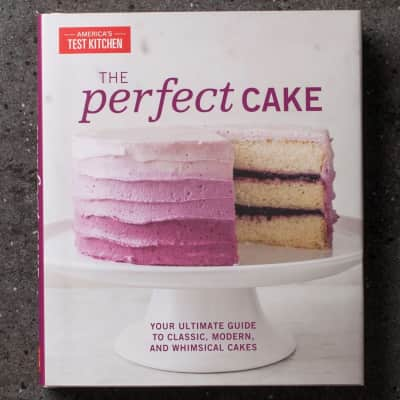In cakes that call for solid (versus melted) butter, there are two ways to incorporate that butter into the batter.
Why Professional Bakers Use Reverse Creaming
Published Nov. 30, 2023.

The creaming method requires beating the butter and sugar together until light and fluffy before adding the remaining ingredients. The reverse-creaming method requires combining the butter with all the dry ingredients before mixing in the remaining ingredients.
Since both approaches produce tender cake, does it really matter which method you use?
It depends on your intention with the cake. When it comes to stacking elaborate layers, frosting, and decorating them, there is a reason that professional bakers prefer reverse creaming for cakes. Read on to learn why.
Sign up for the Cook's Insider newsletter
The latest recipes, tips, and tricks, plus behind-the-scenes stories from the Cook's Illustrated team.
What is Creaming?
Creaming requires beating butter and sugar together until light and fluffy before adding the remaining ingredients. When creaming, the grains of sugar are forced through the fat, leaving millions of microscopic air bubbles in their wake and giving the butter a fluffy appearance.
The tiny pockets of air created during the process get filled by the leavener in the recipe and help cakes rise. As in Lemon Bundt Cake, creaming creates a fluffy crumb and a cake with good height.
What is Reverse Creaming?
When we want a tender but sturdy cake with an ultrafine, downy crumb, we turn to reverse creaming. This process starts with combining all the dry ingredients, after which softened butter is incorporated, followed by any liquid ingredients.
During reverse creaming, the butter coats the flour particles, therefore minimizing gluten development for a tender, fine crumb. Just as important, since the butter isn’t beaten with sugar, less air is incorporated, which translates to less rise and a sturdier cake—perfect for Coconut Layer Cake, where the layers are stacked and frosted.
The Perfect Cake
The definitive guide to any cake you crave, from classic anytime Pound Cake (“The recipe is genius and worth the price of the book.” —The Wall Street Journal) to a stunning and impressive Blueberry Jam Cake with brilliant ombré frosting.Testing Creaming vs Reverse Creaming
To see how these two methods compared, we made two layer cakes using the same ingredients (flour, sugar, salt, baking soda, baking powder, butter, milk, and egg whites) in the same proportions.
We mixed one batter using the creaming method and the other via the reverse-creaming method. We then baked the cakes and asked tasters to compare the texture and appearance of each cake layer. Then, to get really geeky, we used a highly sensitive tool called the Brookfield Engineering CT3 Texture Analyzer to measure the firmness of each cake.
Creaming

Reverse Creaming

How They Compare
Tasters struggled to find any difference in tenderness between the two cakes. Even the texture analyzer measurements confirmed the firmness of the two cakes to be remarkably similar.
That said, the cakes exhibited significant structural differences. The creamed version had a slightly domed top and a fluffy, more open crumb, while the top of the cake that we made using the reverse-creaming method was even and its crumb ultrafine and velvety.
The Science Behind Both Methods

Is One Method Better Than The Other?
Both mixing methods produce equally tender results. Their differences boil down to the crumb’s rise and structure. For everyday baking, fluffy, slightly domed creamed cakes are fine.
Use creaming method for recipes such as pound cake, Gâteau Bretons, or chocolate bundt cake.
For fancy cakes with multiple layers, the flat top and plush crumb of a reversed-creamed cake can be more desirable.
Use reverse creaming method for recipes such as lemon layer cake, New York-Style Crumb Cake, or coffee cake.

